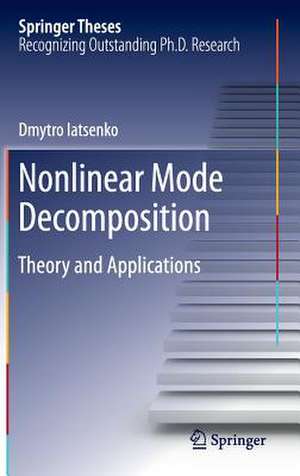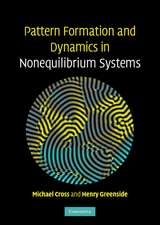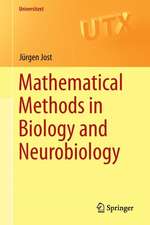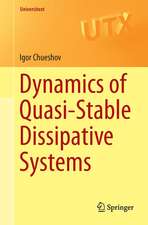Nonlinear Mode Decomposition: Theory and Applications: Springer Theses
Autor Dmytro Iatsenkoen Limba Engleză Hardback – iul 2015
| Toate formatele și edițiile | Preț | Express |
|---|---|---|
| Paperback (1) | 633.68 lei 6-8 săpt. | |
| Springer International Publishing – 17 oct 2016 | 633.68 lei 6-8 săpt. | |
| Hardback (1) | 639.90 lei 6-8 săpt. | |
| Springer International Publishing – iul 2015 | 639.90 lei 6-8 săpt. |
Din seria Springer Theses
- 18%
 Preț: 997.88 lei
Preț: 997.88 lei -
 Preț: 389.88 lei
Preț: 389.88 lei - 15%
 Preț: 646.94 lei
Preț: 646.94 lei - 18%
 Preț: 943.43 lei
Preț: 943.43 lei -
 Preț: 399.29 lei
Preț: 399.29 lei - 18%
 Preț: 944.99 lei
Preț: 944.99 lei - 15%
 Preț: 636.80 lei
Preț: 636.80 lei - 18%
 Preț: 941.05 lei
Preț: 941.05 lei - 15%
 Preț: 643.16 lei
Preț: 643.16 lei - 15%
 Preț: 642.68 lei
Preț: 642.68 lei - 18%
 Preț: 1103.62 lei
Preț: 1103.62 lei - 20%
 Preț: 558.83 lei
Preț: 558.83 lei - 18%
 Preț: 1112.30 lei
Preț: 1112.30 lei - 18%
 Preț: 944.19 lei
Preț: 944.19 lei - 18%
 Preț: 1109.92 lei
Preț: 1109.92 lei - 18%
 Preț: 1217.27 lei
Preț: 1217.27 lei - 15%
 Preț: 640.06 lei
Preț: 640.06 lei - 15%
 Preț: 636.45 lei
Preț: 636.45 lei - 15%
 Preț: 640.06 lei
Preț: 640.06 lei - 15%
 Preț: 640.88 lei
Preț: 640.88 lei -
 Preț: 389.70 lei
Preț: 389.70 lei - 20%
 Preț: 563.91 lei
Preț: 563.91 lei -
 Preț: 393.35 lei
Preț: 393.35 lei - 15%
 Preț: 637.93 lei
Preț: 637.93 lei - 15%
 Preț: 641.85 lei
Preț: 641.85 lei - 18%
 Preț: 1225.94 lei
Preț: 1225.94 lei - 20%
 Preț: 551.36 lei
Preț: 551.36 lei - 18%
 Preț: 1229.10 lei
Preț: 1229.10 lei - 15%
 Preț: 639.25 lei
Preț: 639.25 lei - 18%
 Preț: 999.45 lei
Preț: 999.45 lei - 15%
 Preț: 640.06 lei
Preț: 640.06 lei - 18%
 Preț: 1220.45 lei
Preț: 1220.45 lei - 18%
 Preț: 1116.26 lei
Preț: 1116.26 lei - 18%
 Preț: 1110.72 lei
Preț: 1110.72 lei - 18%
 Preț: 1000.87 lei
Preț: 1000.87 lei - 18%
 Preț: 891.17 lei
Preț: 891.17 lei - 15%
 Preț: 640.06 lei
Preț: 640.06 lei - 5%
 Preț: 1154.07 lei
Preț: 1154.07 lei - 15%
 Preț: 635.96 lei
Preț: 635.96 lei - 15%
 Preț: 640.88 lei
Preț: 640.88 lei -
 Preț: 387.20 lei
Preț: 387.20 lei - 18%
 Preț: 1109.92 lei
Preț: 1109.92 lei -
 Preț: 385.25 lei
Preț: 385.25 lei -
 Preț: 385.25 lei
Preț: 385.25 lei - 18%
 Preț: 1112.30 lei
Preț: 1112.30 lei - 18%
 Preț: 999.45 lei
Preț: 999.45 lei -
 Preț: 386.99 lei
Preț: 386.99 lei - 15%
 Preț: 637.13 lei
Preț: 637.13 lei - 20%
 Preț: 554.21 lei
Preț: 554.21 lei - 20%
 Preț: 555.59 lei
Preț: 555.59 lei
Preț: 639.90 lei
Preț vechi: 752.83 lei
-15% Nou
Puncte Express: 960
Preț estimativ în valută:
122.45€ • 130.94$ • 102.09£
122.45€ • 130.94$ • 102.09£
Carte tipărită la comandă
Livrare economică 17 aprilie-01 mai
Preluare comenzi: 021 569.72.76
Specificații
ISBN-13: 9783319200156
ISBN-10: 3319200151
Pagini: 182
Ilustrații: XXIII, 135 p. 33 illus., 13 illus. in color.
Dimensiuni: 155 x 235 x 15 mm
Greutate: 0.4 kg
Ediția:2015
Editura: Springer International Publishing
Colecția Springer
Seria Springer Theses
Locul publicării:Cham, Switzerland
ISBN-10: 3319200151
Pagini: 182
Ilustrații: XXIII, 135 p. 33 illus., 13 illus. in color.
Dimensiuni: 155 x 235 x 15 mm
Greutate: 0.4 kg
Ediția:2015
Editura: Springer International Publishing
Colecția Springer
Seria Springer Theses
Locul publicării:Cham, Switzerland
Public țintă
ResearchCuprins
Introduction.- Linear Time-Frequency Analysis.- Extraction of Components from the TFR.- Nonlinear Mode Decomposition.- Examples, Applications and Related Issues.- Conclusion.
Textul de pe ultima copertă
This work introduces a new method for analysing measured signals: nonlinear mode decomposition, or NMD. It justifies NMD mathematically, demonstrates it in several applications, and explains in detail how to use it in practice. Scientists often need to be able to analyse time series data that include a complex combination of oscillatory modes of differing origin, usually contaminated by random fluctuations or noise. Furthermore, the basic oscillation frequencies of the modes may vary in time; for example, human blood flow manifests at least six characteristic frequencies, all of which wander in time. NMD allows us to separate these components from each other and from the noise, with immediate potential applications in diagnosis and prognosis. MatLab codes for rapid implementation are available from the author. NMD will most likely come to be used in a broad range of applications.
Caracteristici
Nominated as an outstanding PhD thesis by Lancaster University, UK Free MatLab codes available for all methods used in the book Details many important aspects of time-frequency analysis that are often touched upon only briefly in the literature Includes numerous examples and applications Includes supplementary material: sn.pub/extras











